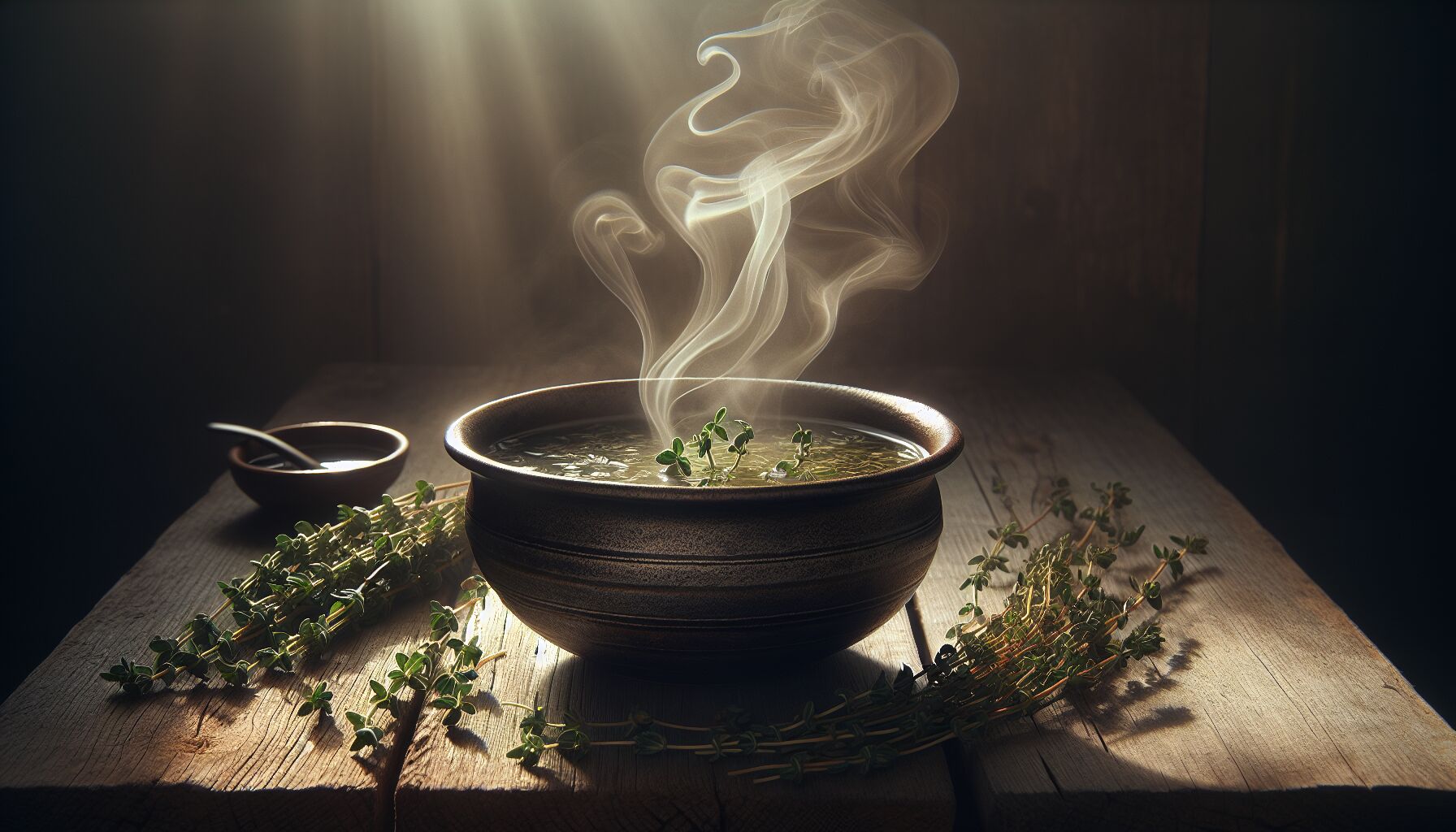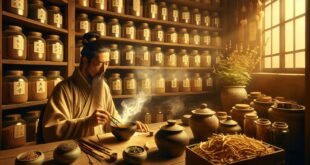 The roots go deep—literally and historically. Sacred herbs have never been just “plants” to those tuned in to the quiet language of the earth. For thousands of years, across continents and climates, people have leaned on their knowledge not only for physical healing, but for clarity, ceremony, and connection. These weren’t merely garden weeds or wild foraged leaves—they were messengers, companions, and in many cases, boundary-crossers between worlds.
The roots go deep—literally and historically. Sacred herbs have never been just “plants” to those tuned in to the quiet language of the earth. For thousands of years, across continents and climates, people have leaned on their knowledge not only for physical healing, but for clarity, ceremony, and connection. These weren’t merely garden weeds or wild foraged leaves—they were messengers, companions, and in many cases, boundary-crossers between worlds.
Different cultures, different landscapes—same reverence. In the misty highlands of Peru, shamans carry *Palo Santo* sticks like memory holders, burning them before ceremony to purify space and invite presence. Travel north to the Lakota nation, and you’ll find *sage* braided in prayer, its smoke not just scent, but spirit-calling. Across the seas in India, *Tulsi*—the holy basil—is planted in courtyards as a living guardian, feeding bees and balancing the soul.
So what makes a plant sacred? It’s not a charm or superstition thing. It’s about relationship—slow-built, rooted in experience. Sacredness emerges when a plant’s wisdom proves itself through time—when it aligns so deeply with human need that its presence becomes ritual. Sometimes, this is learned through shamanic medicine ceremonies. Other times, passed down quietly: mother to daughter, elder to apprentice, one seed story at a time.
“The plants have told us everything we know,” said Pablo Amaringo, a Peruvian shaman-painter. “They are the real teachers.”
That kind of listening takes time, and more than a little humility. In many Native cultures, plant gathering begins with a request—a spoken or felt intention offered to the land. It’s not about extraction or use—it’s communion. You harvest only what you’re invited to take, and you leave something in return: a song, a whisper, a bit of hair or thread. Sounds small? It’s not. That exchange shapes the entire relationship. It builds reciprocity—and that’s the foundation of plant wisdom.
A few herbs stand out as cornerstones, not just because they’re widely used, but because they embody the fullness of spiritual healing. *Ayahuasca*, native to the Amazon Basin, is a bundle of transformative plant intelligence—a mix of Banisteriopsis caapi and Psychotria viridis, it’s used in deep, often rigorous visionary healing. Same goes for *Salvia divinorum* in Mazatec tradition—smoked or chewed to open pathways into other psychic spaces.
But it’s not all about altered states. *Mugwort*, for instance, doesn’t bring on fireworks but gently sharpens dreams, supports womb health, and clears stagnant energy. In Dutch folklore, it was called “mother of herbs”—traced into dream pillows and burned on embers before walking rites. Close to the bones, mugwort helps you remember—what you are, where you’ve been, what’s out there waiting.
And then there’s *Cedar*—long held sacred by many Indigenous traditions. Burned to cleanse, held in sachets, or brewed into a tea, its presence acts like a spiritual firewall, clearing out the heavy stuff that clings to people, homes, and memory. It’s not always gentle, but it’s thorough.
As cultures shift, some of this knowledge gets buried or whitewashed. But people are remembering. Not romanticizing the past—but listening again. And there’s a difference. Shamans weren’t “medicine men” in the caricatured sense—they were stewards of balance. They worked with plants not as commodities, but as living participants in the healing equation. These days, more folks are waking up to that—not because it’s trendy, but because spirit knows when something’s real.
What’s perhaps most revealing about sacred herbs is that they reflect us, back to us. Their bitterness, their aroma, their resilience—it’s all mirrored in how we recover and reconnect. Think of plant wisdom not just as a remedy system, but as a language of belonging. You’re not just ingesting or rubbing on a leaf—you’re entering a centuries-spanning conversation between soil and soul.
You might not be standing in a rainforest or a Navajo sweat lodge, but even a cup of *holy basil* tea at sunrise can be sacred if entered into with reverence. The point isn’t the plant—it’s the presence. The intention. The return to remembering.
And remembering matters, because disconnection is one of the deepest roots of modern illness—the kind that doesn’t always show up in labs but weighs down the heart. Sacred herbs don’t fix everything, but they soften us to the deeper work, where the real shifts start. One scent, one sip, one breath at a time.
Shamanic healing rituals involving plants
Shamanic healing doesn’t start with the herbs—it starts with the listening. Before anyone brews a vine, burns a leaf, or chants over water, there’s a moment of stillness—a kind of tuning in. That’s the part most modern folks miss, distracted by the flash of ceremony without settling into the gravity of it. The herbs might be powerful, yes, but they’re co-facilitators, not magicians. In true shamanic medicine work, the plant doesn’t do the healing alone. The person has to show up. Raw, willing, awake.
Traditionally, a healing session might be set under stars in a jungle clearing, or in the quiet hush of a hut, stone floor cool beneath bare feet. Each step of the ritual—every chant, every smoke trail, every sip—has purpose, timing, rhythm. A shaman prepares by fasting, praying, sometimes going without sleep. Not to dramatize, but to clear their own channel. You can’t guide someone through their shadow if you’re tangled in your own noise.
Herbs used in these rituals aren’t just selected for physical properties—they’re chosen for their *spirit*. Plants like *ayahuasca*, *mapacho* (wild tobacco), and *chacruna* don’t merely clean out the body—they illuminate the psyche. In Shipibo-Conibo traditions of the Amazon, it’s said that ayahuasca doesn’t reveal what you want—it reveals what you *need*. That includes buried trauma, ancestral patterns, or the deep ache of unspoken grief. And that’s where the real work begins.
“Healing is not just about fixing problems—it’s about facing what’s been avoided,” a curandera once said in the Madre de Dios region.
And it’s not always gentle. Spiritually, the plants invite confrontation. You might purge—physically, emotionally, energetically. That’s not failure. That’s clearing space. In many traditions, especially in *la dieta* (a sacred period of food and sensory restriction while connecting with specific plant teachers), this purgative aspect is respected, even celebrated. There’s humility in it. You meet yourself stripped, unguarded. You meet the medicine.
Then there’s sound. *Icaros*—ceremonial songs passed through generations—carry the vibration of plant wisdom. Shamans don’t just sing to fill the air; they sing to direct energy, to guide release, to call in protection. In places like the Upper Amazon, these songs are considered just as critical to healing as the plants themselves. Some believe the songs come *from* the plants—learned not by observation but through communion over years, in dreams or trance states under deep ceremonial dieta.
Fire plays its part, too. Whether it’s burning *copal* resin in Mesoamerican ceremonies or *sage* in North American purification rites, the smoke is not incense—it’s a carrier of prayer. It curls upward like an offering, a bridge between seen and unseen. Every element—earth, fire, water, air—is drawn in to create a container of belonging. Healing, in this context, is not about perfection. It’s about returning to wholeness.
Some rituals may appear “simple”—a bath infused with *guava leaves* and *rose petals* or a steam made from *eucalyptus* and *lemongrass*. But like any folk tradition, the depth is in the layers. Plants are asked to remember for us, to carry memory through our body, to awaken something asleep. And when herbs are combined with ancient rhythms—like the drumbeat mimicking a heartbeat, or the rattle shaking loose stagnant energy—it stirs more than thought. It stirs memory embedded in the body, beyond language.
Here’s the thing: most shamanic practitioners today tread carefully, especially those holding ceremonies outside their own lineage. And that’s part of the integrity—acknowledging where the knowledge comes from. Not every ritual belongs to everyone. But the spirit of shamanic healing—reverence, relationship, reciprocity—*that* can be honored anywhere.
You don’t need an elaborate ritual to learn from this. Even a mindful tea ceremony with *mugwort* or a practice of burning *cedar* before journaling can begin to reshape your understanding. The point is to slow down. Listen. Let the plant teach you something you didn’t know you’d forgotten.
And that’s where the deeper medicine lives—not in isolated moments but in ongoing relationships. The more you sit with a plant, the more it reveals. Not always in words—but in feelings, images, hunches. That’s part of the language of spiritual healing—it moves subtly, like wind through the trees.
Pierre Teilhard de Chardin wrote, “We are not human beings having a spiritual experience; we are spiritual beings having a human experience.”
That truth pulses in every true ritual. The plants remind us of it—not with fanfare, but with quiet clarity. They carry memory and medicine. To sit with them in ceremony is to remember how to carry yourself.
Modern applications of traditional herbal knowledge
 Some folks ask—how does all this ancient plant wisdom actually fit into daily life now? The answer’s simpler than expected, but not always easy: it depends on how deeply you’re willing to listen and adapt. That kind of knowledge isn’t confined to a jungle or a temple. It’s showing up today in apothecaries tucked behind cafés, regenerative farms, neighborhood healing circles—anywhere people are waking up to the deeper threads running through real wellness. When we bring traditional herbal knowledge into the modern day, we’re not reviving relics—we’re recognizing living systems that have always known more than we’ve let on.
Some folks ask—how does all this ancient plant wisdom actually fit into daily life now? The answer’s simpler than expected, but not always easy: it depends on how deeply you’re willing to listen and adapt. That kind of knowledge isn’t confined to a jungle or a temple. It’s showing up today in apothecaries tucked behind cafés, regenerative farms, neighborhood healing circles—anywhere people are waking up to the deeper threads running through real wellness. When we bring traditional herbal knowledge into the modern day, we’re not reviving relics—we’re recognizing living systems that have always known more than we’ve let on.
Plant medicine is making its way into clinics, classrooms, and even courtrooms. No longer written off as fringe or folkloric, remedies like *ashwagandha*, *lion’s mane*, and *Saint John’s Wort* are validated in peer-reviewed journals, studied by neuroscientists, and sold with barcodes. That visibility has its place, sure. But it’s still just the surface. Systems like *shamanic medicine* don’t just look at what a plant *does*. They ask, “What’s the plant saying? Who is it best for? At what time in the cycle of healing does it serve?”
“Science is not only compatible with spirituality; it is a profound source of spirituality,” said Carl Sagan, reminding us that deep truth spans both leaf and lab.
Now, let’s be honest—accessibility shifts things. A massive difference exists between drinking a $5 turmeric latte from a boutique store and preparing fresh *curcuma longa* root with traditional milk and peppercorns as part of an anti-inflammatory ritual. Both might help with joint pain, but only one asks you to pause, feel, and connect. That’s the missing layer in most commodified herbal trends: the spiritual healing that comes not just from what a plant does *chemically*, but what it draws out *energetically*.
That said, there are useful paths forward. Herbal practitioners rooted in both ancestral lineages and modern science—like those trained through the American Herbalists Guild—help bridge that divide. Under their guidance, people learn to integrate plants like *reishi* for immune modulation or *passionflower* for nervous system balance not in isolation, but within the context of ritual, season, and story.
In terms of real, boots-on-the-ground applications, here’s what’s unfolding:
- Herbal clinics and community apothecaries — Often staffed by grassroots herbalists, these spaces offer tinctures, salves, and dried plants for both body and soul. Think more local remedy bar than CVS. Some even offer “sliding scale” consultations that blend spiritual listening with physical diagnosis.
- Trauma-informed healing practices — Especially in somatic therapy and wellness circles, herbs like *skullcap*, *mullein*, and *holy basil* are being used to assist emotional processing. Not as crutches, but as companions while navigating deep work like EMDR, breathwork, or post-ceremony integration.
- DIY ceremonies at home — Folks are discovering how to weave subtle rituals into their daily rhythm—a quick peppermint foot soak after long hours on screens, or burning *cypress* for ancestral reflection on quiet Sundays. No flash, no guru—just plant medicine grounding real life.
Even large institutions are paying attention. Johns Hopkins is studying psilocybin not just for depression, but for helping terminally ill patients find peace (check the original research at NCBI). And while that’s clinical, at its heart, it touches what shamanic cultures have always said—some plants show you how to die well, which is really another way of saying they show you how to live well.
Let me explain something important here: spiritual healing through plants isn’t about escaping modern life. It’s about inhabiting it deeply, with more truth. It means using *dandelion root* to support the liver not just because of its detox properties, but because you’re also working to release old resentment. It means preparing *nettle tea* not just for minerals but to restore your sense of strength after depletion, burnout, or heartbreak. Those overlaps—between physical support and emotional re-storying—are where plant wisdom thrives.
And sometimes, it simply means paying attention. Memories returned through the scent of burned *lavender stalks*. Boundaries redrawn while standing beneath wild *oak*. There’s wisdom tangled in the scent, the silence, the stem. These plants don’t exist only for health—they’re participants in your creative, healing life.
The key? Consistent relationship. You don’t have to know every Latin name or dosage range. Rest in cycles. Learn from the seasons. Keep a tiny herbal journal. Tend a local plant, even on a windowsill. The knowledge unfolds the way a fern does—slowly, precisely, beautifully.
Big medicine doesn’t always come in big packages. Sometimes it’s a kitchen pot of simmering *rosehips*. A sprig of *rosemary* behind the door. A steaming bowl of thyme broth when your voice feels lost. Old ways becoming modern through care, not trend.
And that’s the through line here: care. When you engage with traditional herbs in honest ways—whether through *shamanic medicine*, spiritual healing practice, or just quiet moments before sleep—it stops being a method and becomes a remembering. Plant wisdom doesn’t ask us to be experts. It just asks us to be present.
 DS Haven In Light Of Things
DS Haven In Light Of Things






